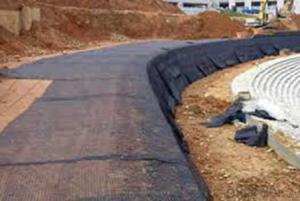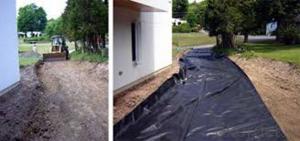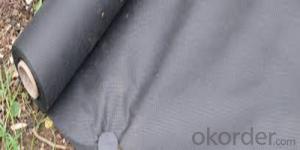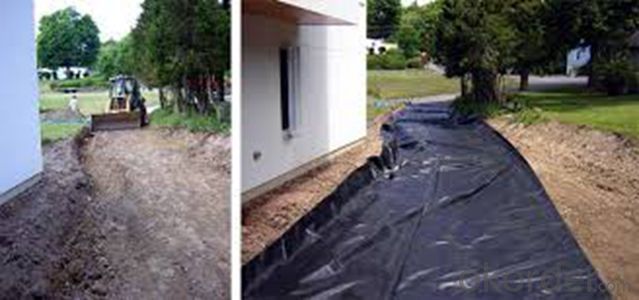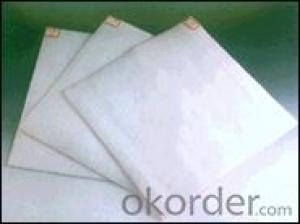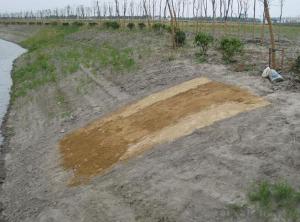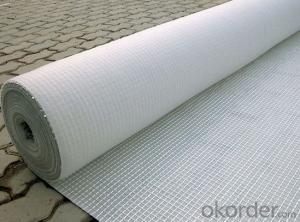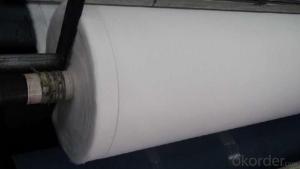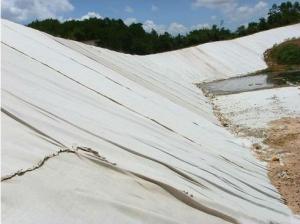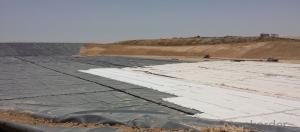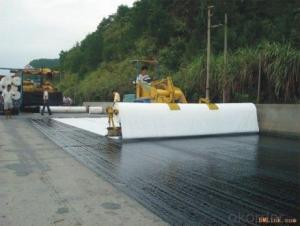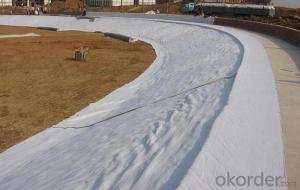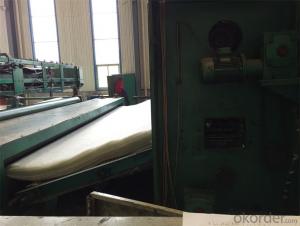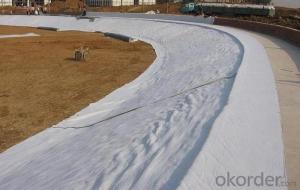Geotextile Philippines Non-Woven Geotextile Needle Punched PET Fabric
- Loading Port:
- China main port
- Payment Terms:
- TT OR LC
- Min Order Qty:
- 2000 m²
- Supply Capability:
- 1000000 m²/month
OKorder Service Pledge
OKorder Financial Service
You Might Also Like
Specification
Application Range
Paved roads
Unpaved / site access / farm roads
Land development for industrial and housing estates
Revetment and rip-rap filtration
Filter for gabions
Road embankment
Railway formation
Land reclamation
Storage and container yards
Parking area
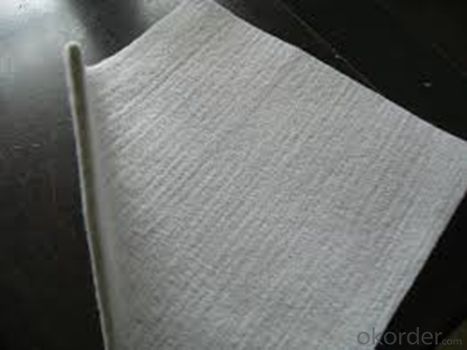
Geotextile Applications
1) Filtration :
The filtration layer of the dykes, river canal, seacoast, concrete slope, retaining walls. At the same time of preventing the clay granule from passing, it allows the water and the gas pass through freely.
2) Separation :
The isolation of the railway dregs and the roadbed, roadbed and the soft base, surface of the airdrome and parking lot and the groundsill, different dam materials. It isolates the soil and the gravel of two kinds different granule pathway from the groundsill or other buildings.
Our Service
Quality assurance
1.On a regular basis or as per your request,we entrust national testing agencies to conduct quality inspections
2. Strictly in accordance with the ISO9001-2008 international quality system standard,we monitor and manage the whole process throughout production,quality testing,and measurement to ensure product quality
3. For quality-related construction delay or substandard construction(except for damage or losses due to customer’s responsibility or irresistible natural disasters),we have refunding,replacement,and repair services.We will respond to customers’ feedbacks on quality issues within 24 hours.
After-sales service
1.In order to provide customers with comprehensive technical support,we will provide technical and other related information upon request in a timely manner.
2.In required,we will appoint specialized technicians to the construction site to give technical trainings to construction people,and offer technical guidance throughout the whole construction process.
3.For damage due to shipment and delivery,after we receive the complaint,we will check the issure through provided pictures and videos.If our responsibility is confirmed,we wil offer free replacement.
4.When the construction is completed,as your request,our technical staff may participate in the final acceptance.
FAQ:
Q: What kind of payments does jenor support?
A: T/T, L/C, Cash are accepted.
Q: Do you charge for the samples?
A: Accordeing to our company policy, the samples are free, we only charge the freight fee. And we will return the freight fee during the next order.
Q: Can you produce according to customers' design?
A: Sure, we are professional manufacturer, OEM and ODM are both welcome.
Q: Do you have other products?
A: Yes, please check the pictures:
- Q: How do geotextiles help with waste containment systems?
- Geotextiles help with waste containment systems by acting as a barrier and providing reinforcement. They prevent the migration of waste materials, such as landfill leachate or contaminated soil, by effectively separating and containing them within the system. Geotextiles also enhance the stability and durability of the containment system by distributing loads and reducing the risk of punctures or tears.
- Q: How do geotextiles help with erosion control in slope protection projects?
- Geotextiles help with erosion control in slope protection projects by providing a physical barrier that prevents soil erosion. They are placed on the surface of slopes to stabilize the soil, allowing vegetation to grow and establish roots. This helps in reducing the impact of rainfall and surface flow, minimizing sediment runoff, and maintaining the integrity of the slope. Additionally, geotextiles enhance the overall stability of the slope by distributing loads and reinforcing the soil, thereby reducing the risk of slope failure.
- Q: Can geotextiles be used in mining applications?
- Yes, geotextiles can be used in mining applications. They are commonly used in mining for various purposes such as erosion control, soil stabilization, and filtration. Geotextiles can help to prevent soil erosion on slopes, reinforce weak soil structures, and separate different materials in mining operations. Additionally, they can aid in water management by acting as a barrier or filter to control sedimentation and drainage.
- Q: Artificial lake geotextile practices
- Library and slope with a composite geomembrane all laying, I specialize in the production and construction of geotextile materials
- Q: What are the different geotextile filter criteria?
- The different geotextile filter criteria include permeability, retention, durability, and compatibility with the surrounding soil or materials.
- Q: Sponge city sunken green land in the drilling drainage jacket how to set the amount of geotextile
- Need plastic blind ditch, complete specifications, collar Xiang new materials for your answer
- Q: What are the factors to consider when designing geotextile tubes for dewatering?
- When designing geotextile tubes for dewatering, several factors need to be considered. These include the type and characteristics of the sediment being dewatered, the desired dewatering efficiency, the required size and number of tubes, the hydraulic conditions, the site-specific environmental factors, and the available equipment and resources. Additionally, factors such as the strength and permeability of the geotextile material, the potential for clogging, and the long-term stability of the dewatering system should also be taken into account.
- Q: Can geotextiles be used for soil stabilization?
- Yes, geotextiles can be used for soil stabilization. They are commonly used in civil engineering projects to reinforce soils, prevent erosion, and improve the overall stability of the soil. Geotextiles can effectively distribute loads, control soil movement, and enhance the performance of the soil in various applications such as road construction, retaining walls, slopes, and landfills.
- Q: How do geotextiles help with sediment filtration in stormwater ponds?
- Geotextiles help with sediment filtration in stormwater ponds by acting as a barrier that traps and retains sediment particles while allowing water to pass through. The geotextile fabric, which is typically made of synthetic materials, has a porous structure that captures sediment and prevents it from being carried away by stormwater runoff. This helps to maintain water quality in the pond by reducing the amount of sediment and pollutants that can accumulate.
- Q: Can geotextiles be used in retaining wall drainage systems?
- Yes, geotextiles can be used in retaining wall drainage systems. Geotextiles are commonly used as a filter fabric to prevent the migration of fine particles into the drainage system, while allowing water to flow through. By placing geotextiles behind the retaining wall, they help to enhance the drainage efficiency and overall stability of the system.
Send your message to us
Geotextile Philippines Non-Woven Geotextile Needle Punched PET Fabric
- Loading Port:
- China main port
- Payment Terms:
- TT OR LC
- Min Order Qty:
- 2000 m²
- Supply Capability:
- 1000000 m²/month
OKorder Service Pledge
OKorder Financial Service
Similar products
Hot products
Hot Searches
Related keywords
